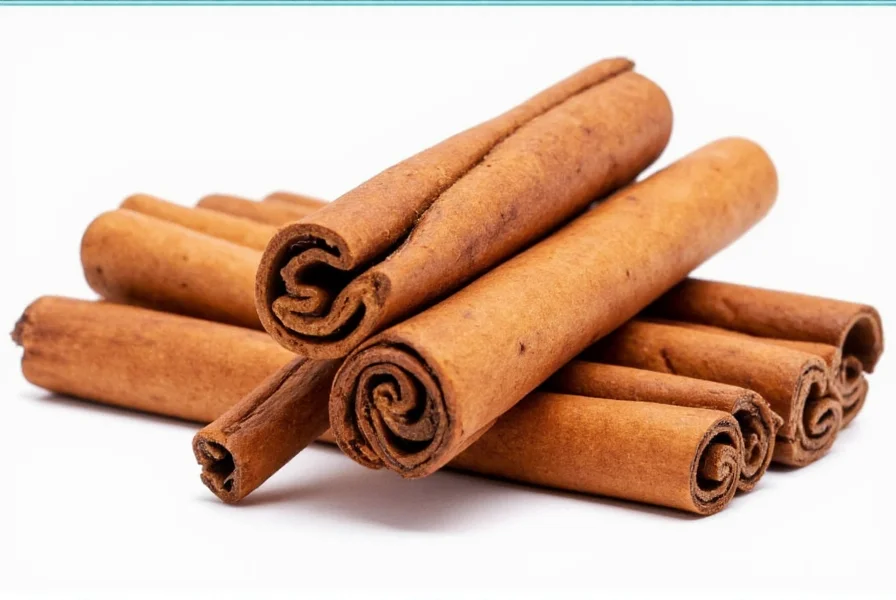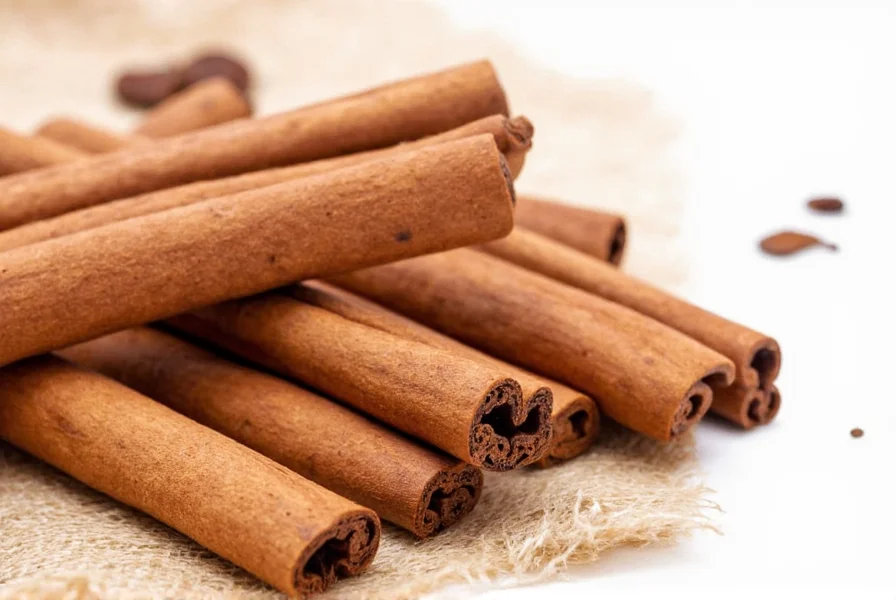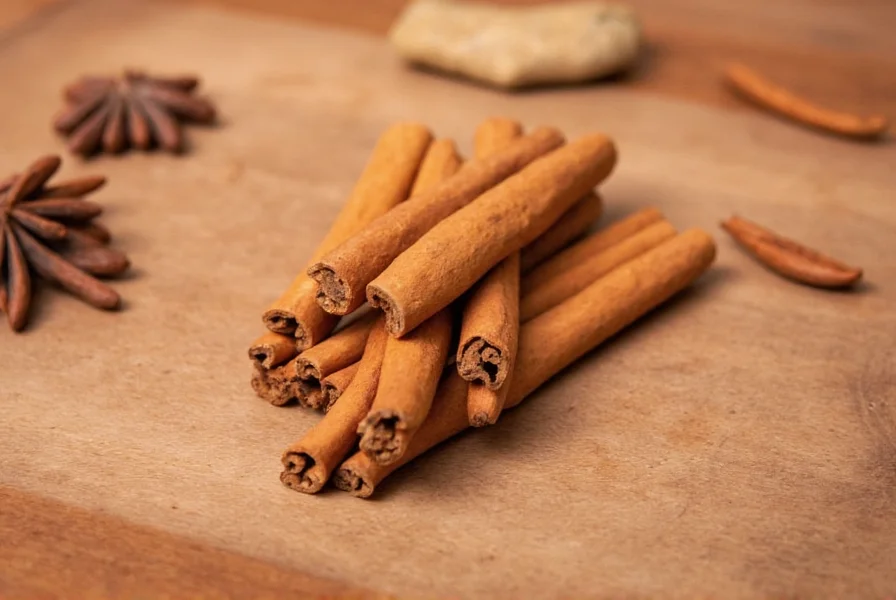Cinnamon sticks represent the purest form of this ancient spice, preserving its essential oils and nuanced flavor far better than pre-ground alternatives. When you hold a genuine cinnamon stick, you're handling centuries of culinary tradition—from ancient Egyptian embalming practices to medieval European luxury markets. The distinctive quill shape forms naturally as the inner bark dries and curls, creating a convenient whole-spice format that slowly releases flavor when steeped.

Understanding Cinnamon Stick Varieties
Not all cinnamon sticks deliver the same experience. The market primarily offers two distinct types:
| Characteristic | Ceylon Cinnamon ("True" Cinnamon) | Cassia Cinnamon (Common "Cinnamon") |
|---|---|---|
| Origin | Sri Lanka, India, Madagascar | China, Indonesia, Vietnam |
| Appearance | Multiple thin, fragile layers forming soft quills | Thick, hard single-layer quills |
| Flavor Profile | Delicate, sweet, citrusy notes | Intense, spicy, slightly bitter |
| Coumarin Content | Very low (safe for regular consumption) | High (potential health concerns in large quantities) |
Culinary Applications of Whole Cinnamon Sticks
Professional chefs and home cooks increasingly recognize the superior flavor infusion capabilities of cinnamon sticks compared to ground alternatives. When preparing what are cinnamon sticks used for in traditional cooking, consider these applications:
- Liquid-based preparations: Simmer sticks in broths, stocks, poaching liquids, or mulled wines for even flavor distribution without grittiness
- Rice and grain dishes: Add to cooking liquid for biryani, rice pudding, or oatmeal for subtle background warmth
- Syrups and infusions: Create cinnamon simple syrup by steeping sticks in equal parts water and sugar
- Spice blends: Toast whole sticks before grinding for custom garam masala or Chinese five-spice powder
The difference between cinnamon sticks and powder becomes particularly evident in long-cooking applications. Ground cinnamon loses volatile compounds quickly when exposed to heat, while sticks gradually release complex flavor molecules throughout cooking time. This slow extraction process creates more dimensional flavor profiles in dishes like Moroccan tagines or Indian curries.
Proper Storage Techniques for Maximum Freshness
Understanding how to store cinnamon sticks properly extends their shelf life significantly. Unlike ground cinnamon which deteriorates within 6 months, properly stored sticks maintain quality for 2-3 years. Follow these storage protocols:
- Keep in airtight glass or metal containers away from light
- Maintain stable temperature below 70°F (21°C)
- Avoid humidity exposure—never store near stovetop or sink
- Check annually for aroma strength; replace when scent diminishes
For extended preservation, some professional kitchens freeze cinnamon sticks in vacuum-sealed bags. This method maintains volatile oil content for up to 5 years. When using frozen sticks, add them directly to cooking liquids without thawing to prevent condensation.
Evidence-Based Health Considerations
While health benefits of cinnamon sticks generate considerable discussion, scientific evidence supports specific applications. Research published in the Journal of Agricultural and Food Chemistry confirms that Ceylon cinnamon sticks contain bioactive compounds with demonstrated properties:
- Blood sugar management: May improve insulin sensitivity in prediabetic individuals (American Journal of Clinical Nutrition, 2013)
- Antioxidant capacity: Contains 41 distinct protective compounds, particularly potent when used whole
- Anti-inflammatory effects: Shown to reduce markers of inflammation in clinical studies
Important safety note: Cassia cinnamon sticks contain significant coumarin levels. The European Food Safety Authority recommends limiting Cassia consumption to 0.1mg per kg of body weight daily. Those with liver conditions should prioritize Ceylon sticks, which contain negligible coumarin.
Common Misconceptions Clarified
Several myths persist about cinnamon sticks vs ground cinnamon. Scientific analysis reveals:
- "Cinnamon sticks are just rolled-up powder" – False. The quill structure forms naturally during harvesting as inner bark dries
- "All cinnamon is nutritionally identical" – Incorrect. Ceylon contains different compound ratios than Cassia
- "Sticks offer no advantage over fresh grinding" – Misleading. Whole sticks preserve volatile oils 3x longer than freshly ground
When seeking cinnamon stick substitutes, understand that no direct replacement exists for their slow-release properties. In emergencies, wrap ground cinnamon in cheesecloth to approximate infusion effects, but expect less complex flavor development.

Practical Usage Tips
Maximize your how to use cinnamon sticks in cooking experience with these professional techniques:
- Breaking method: Wrap sticks in a kitchen towel and gently tap with hammer to create smaller pieces without shattering
- Infusion timing: Add to liquids at beginning of cooking for subtle flavor; during last 15 minutes for brighter notes
- Reuse potential: Dry thoroughly after first use; one stick typically provides 2-3 quality infusions
- Measurement conversion: 1 standard stick (2-3 inches) equals approximately ½ teaspoon ground cinnamon
Frequently Asked Questions
Can I substitute cinnamon sticks for ground cinnamon in recipes?
Yes, but with important considerations. One standard cinnamon stick (2-3 inches) equals approximately ½ teaspoon ground cinnamon. For best results, add sticks at the beginning of cooking for liquid-based recipes, while ground cinnamon works better in baked goods where gradual infusion isn't possible. Remember that Cassia sticks contain higher coumarin levels than Ceylon sticks.
Why do professional chefs prefer cinnamon sticks over powder?
Chefs value cinnamon sticks for their superior flavor preservation and controlled infusion capabilities. The whole form maintains essential oils up to three times longer than ground cinnamon, and allows for gradual flavor release during cooking. This creates more complex, nuanced dishes without the grittiness that ground cinnamon can introduce to sauces and beverages.
How can I tell if my cinnamon sticks have gone bad?
Fresh cinnamon sticks should emit a strong, sweet aroma when scratched. Signs of deterioration include faded color, brittleness, loss of aromatic intensity, and visible mold. Properly stored sticks maintain quality for 2-3 years, while ground cinnamon typically lasts only 6 months. If your sticks no longer perfume your kitchen when used, they've likely lost significant flavor compounds.
What's the difference between Ceylon and Cassia cinnamon sticks?
Ceylon cinnamon ("true" cinnamon) comes from Cinnamomum verum trees and features multiple thin, papery layers that form soft, easily breakable quills with a delicate, sweet flavor. Cassia cinnamon, the more common variety, has thick, hard single-layer quills with a stronger, spicier taste and significantly higher coumarin content. Ceylon is preferred for regular consumption due to its lower coumarin levels.
Can I grind my own cinnamon from sticks?
Absolutely—freshly grinding cinnamon sticks yields superior flavor. Use a dedicated spice grinder or mortar and pestle for best results. For optimal aroma retention, grind only what you need immediately before use. Note that Ceylon sticks grind more easily than Cassia due to their layered structure. Store any extra ground cinnamon in an airtight container away from light, but expect it to lose potency within weeks.











 浙公网安备
33010002000092号
浙公网安备
33010002000092号 浙B2-20120091-4
浙B2-20120091-4